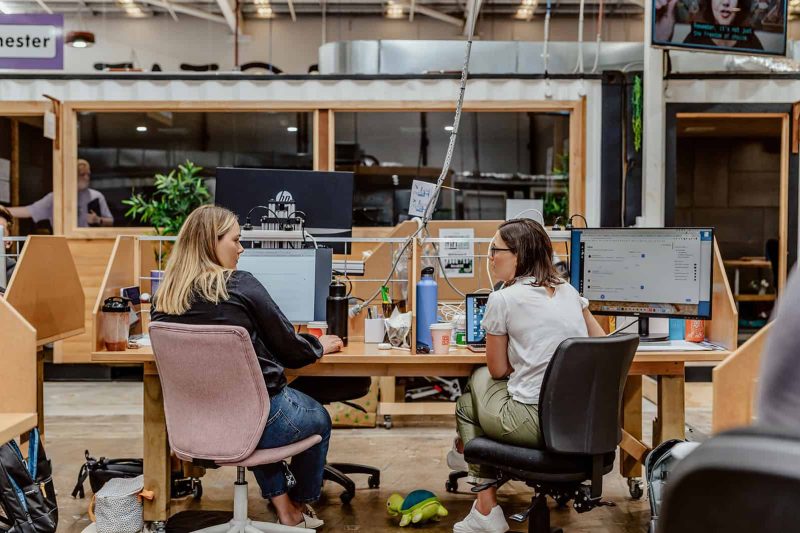The role of coworking in modern workplaces has never been more significant.
In a world where flexibility and remote work are common, the need for human connection is stronger than ever.
Open, high-profile coworking areas encourage interaction, energy and a sense of belonging from the moment someone walks in the door.
“At WOTSO we tend to put the coworking space in a high-profile area because it promotes interaction and energy for everyone,” says WOTSO CEO Jessie Glew.
One recent example is WOTSO North Sydney, where the coworking space was relocated from an upper floor to the glass-fronted ground level.
The change created a vibrant, welcoming hub that not only boosted engagement for existing members but also attracted new ones.
“Some of the existing members were nervous about the switch but now they love it and the move has already attracted new members, adding to the buzz,” says Glew.
Community is more than a nice-to-have, it’s central to the coworking experience.
Shared spaces make it easier for people to connect, network and start conversations that might not happen behind closed doors.
This is why in some of our spaces we are dedicating up to 50% of our footprint to open coworking.
The demand for community isn’t slowing down, even as AI and automation transform how we work.
“Technology can do a lot, but it can’t replace human connection,” Glew says.
For many people, coworking is about more than leaving the house. It’s about finding a place to belong.
A recent look at coworking in New Zealand and in a number of regional areas across Australia reinforces this point.
“In New Zealand a lot of operators just have coworking,” says Glew.
“They’re hanging on to what the whole purpose of coworking is, which is to bring people together and create resilient communities.”
It’s a timely reminder that while flexible work continues to evolve, community remains at the heart of what makes these spaces thrive.





